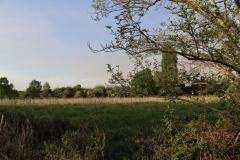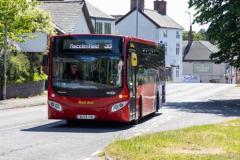October was, for the British, as miserable as the previous month. The Germans consolidated their mastery of the war in the air largely through the use of the Fokker Eindecker E1, the first aircraft to be fitted with a synchronised gear enabling the pilot to fire a machine gun through the arc of the propeller without striking the blades.
Severe airship raids continued over the East coast and London; the attack by 6 Zeppelins on Theatreland on the night of 13th/14th killed 47 and injured over 100 near the Lyceum and Gaiety venues. Over in Brussels Nurse Edith Cavell was executed on the 12th for harbouring Allied troops and funnelling them out of occupied Belgium. (Her body was reburied in Norwich Cathedral in1919.)
We had some success as British submarines destroyed a number of merchant vessels and cruisers. However, another invasion failed to achieve its objectives: Bulgaria had joined the central powers and declared war on Serbia and had attacked her in association with simultaneous German and Austrian incursions. We and the French sent troops to Salonika to support the fleeing Serbians. The 2nd and 12th Cheshires were part of our contingent but the expedition arrived too late as the Serbians had already been beaten.
It was decided, however, to keep a defensive force in place on the coast as a base for possible future operations. We stayed until September 1918 under conditions similar to Gallipoli.
The Dardanelles campaign dragged on and the community suffered another casualty. Private Walter Woodhouse (3407) of the 1st/7th Cheshires died, aged 18, on the first of the month. Records show he "died at sea" of enteric (typhoid) fever, so he was probably on the way to Malta at the time. Walter was the son of Hannah Sophia Woodhouse of Church Street and he is commemorated at Helles, on the town memorial and inside St Bart's.
The hapless General Sir Ian Hamilton was now replaced by Sir Charles Monro who soon realized how hopeless our position was and had begun planning an evacuation by the end of the year. The evacuation was brilliantly conducted and casualties were remarkably low (much lower than Hamilton's estimate of 50%).
Meanwhile the battle of Loos was coming to an end. We attacked the Hohenzollen Redoubt on the 13th – the last afternoon of the battle. This gallant failure resulted in one more local death – that of Private John William Clarke Brocklehurst (7041) of the 7th battalion the East Surreys. Killed in action aged 25, he has no known grave and is remembered on memorials at Loos and Alderley Edge. He was born in Longsight and enlisted at Kingston on Thames. His parents, Thomas and Sarah, lived at 10 Duke Street, Alderley.
His brother's grave is in St Bart's churchyard where the inscription reads "M2/097823 Pte T H Brocklehurst Royal Army Service Corps 1st December 1917 aged 23. Also in memory of 7041 Pte J W C Brocklehurst East Surrey Regiment died 13th October 1915."
Attacks in 1915 taught us many lessons too many of which we failed to learn. Intelligence was poor. No surprise was achieved. The duration and weight of the bombardment was insufficient to break the wire or destroy the German defences. Royal Flying Corps reconnaissance was limited. Our troops were to pay heavily for a repetition of these on the killing fields of 1916.
Guest post by Jon Armstrong and Alan Cooper
Wilmslow Historical Society
with a contribution from Adrian Lennard.












Comments
Here's what readers have had to say so far. Why not add your thoughts below.